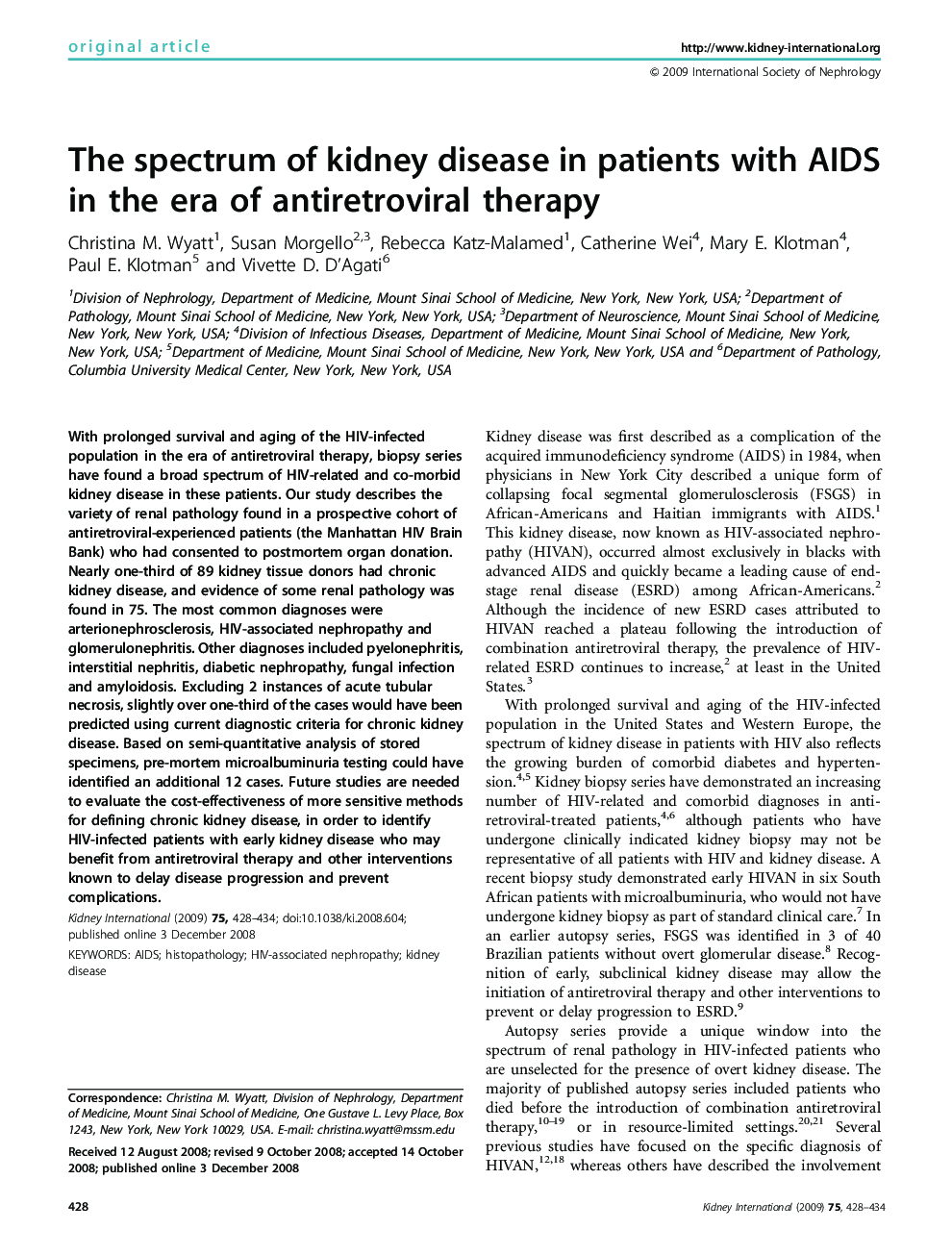| Article ID | Journal | Published Year | Pages | File Type |
|---|---|---|---|---|
| 3884523 | Kidney International | 2009 | 7 Pages |
With prolonged survival and aging of the HIV-infected population in the era of antiretroviral therapy, biopsy series have found a broad spectrum of HIV-related and co-morbid kidney disease in these patients. Our study describes the variety of renal pathology found in a prospective cohort of antiretroviral-experienced patients (the Manhattan HIV Brain Bank) who had consented to postmortem organ donation. Nearly one-third of 89 kidney tissue donors had chronic kidney disease, and evidence of some renal pathology was found in 75. The most common diagnoses were arterionephrosclerosis, HIV-associated nephropathy and glomerulonephritis. Other diagnoses included pyelonephritis, interstitial nephritis, diabetic nephropathy, fungal infection and amyloidosis. Excluding 2 instances of acute tubular necrosis, slightly over one-third of the cases would have been predicted using current diagnostic criteria for chronic kidney disease. Based on semi-quantitative analysis of stored specimens, pre-mortem microalbuminuria testing could have identified an additional 12 cases. Future studies are needed to evaluate the cost-effectiveness of more sensitive methods for defining chronic kidney disease, in order to identify HIV-infected patients with early kidney disease who may benefit from antiretroviral therapy and other interventions known to delay disease progression and prevent complications.
